Home Study
STEP 1: Start by Trusting the Industry
 Your first task is to settle all the major worries you have regarding the airline industry. No self-help skills will assist you in your goal unless you choose to feel safe on commercial flights. The goal in this task is to reassure yourself whenever you feel anxious about taking a flight.
Your first task is to settle all the major worries you have regarding the airline industry. No self-help skills will assist you in your goal unless you choose to feel safe on commercial flights. The goal in this task is to reassure yourself whenever you feel anxious about taking a flight.
This reassurance is not that you are going to be physically comfortable and relaxed, but that you are safe on the plane. Here is the communication to aim for: "My discomfort is not really about the plane being dangerous, this is about me having difficulty with [not being in control, claustrophobia, panic attacks, being trapped . . . ." Remember, you start here. Turn the issue back onto yourself, because you have far more control over yourself than you do over the plane. You have many skills and attitudes to apply to the problem of anxiety, and very little to apply to any problem of safety.
The good news is, you really don't need to worry about safety issues with flying. It is truly the safest mode of modern transportation. Furthermore, once you stop blaming the industry for your fears, you will instantly have significantly more psychological power to reduce your symptoms of anxiety.
So, actively seek out information about air travel, including pilot training, aircraft construction and maintenance, the air traffic control system, the monitoring of weather systems, turbulence and all the normal sights, sounds and sensations while on a flight. There is much to learn if you choose to study this topic. Here are some examples:
- The cost and duration of training pilots with a major carrier are comparable to training a physician.
- Back-up systems have been provided for virtually every system on the airplane so that if one system fails, another will takes its place. For instance, a 747 has eighteen tires: four on each of the main landing struts and two on the nose wheel. Computers on the planes built this decade have two or three autopilots and generally three computers that are able to handle all necessary functions.
- Commercial aircraft average twelve hours of maintenance on the ground for every one hour spent in the air. Commonly scheduled maintenance checks while the plane is grounded include twelve person-hours daily; another seventeen person-hours every four or five days; one-hundred twenty-five person-hours every thirty days; a two-thousand person-hour inspection (involving one hundred and ten people) once every twelve to eighteen months; and a major overhaul every four years, taking four to five weeks and requiring twenty-two thousand person hours of labor.
- Air traffic controllers go through rigorous training and internship that lasts three to four years. For every eight-hour shift, a controller is restricted to a maximum of five or six hours actively directing traffic, with several breaks throughout that time.
- Each plane flies right down the middle of a private highway in the sky that is ten miles wide. No other plane is allowed in that space.
- Standard industry policy is to avoid all thunderstorms by at least twenty nautical miles.
- We measure turbulence, or "chop", in terms of gravity. Point-four g's of force is considered "severe" and is rarely experienced during commercial flight. But federal regulations require planes to be able to fly without problems through at least two g's, and today's manufacturers build planes that are tested to withstand six to seven g's of force. Mother Nature won't be creating any turbulence to match that.
On a flight, you may notice a number of "unusual" sounds and sensations that are actually normal and appropriate operations. For example:
- Cargo pallets are loaded while you are boarding the plane. You may feel the plane suddenly move in response to the pallets being positioned in the cargo bay.
- You may see "clouds" emerge from the air conditioning ducts on the lower wall next to your seat or in the ceiling ducts. It is not smoke, it just looks like it. Condensation occurs when the cold air from the A/C system circulates into the hot, humid cabin. The cold air mixing with hot, moist air causes "clouds" of condensation.
- If you're sitting in the middle of the airplane, you'll probably encounter more sounds prior to takeoff and during the flight. All the flight controls and devices on the airplane are either electrically or hydraulically activated. Most of the hydraulic pump system's actuators are located in the middle of the airplane in its belly, close to the landing gear. Therefore you may hear pumps that cycle on and off. They are designed to do that to maintain a certain pressure. As the pressure slacks off, they pump it up again. You may also hear other pumps being activated to energize the hydraulic system operating the leading edge devices and trailing edge flaps, the main landing gear and nose wheel, the spoilers, and the speed brakes.
- Occasionally you might feel a light bumping of the tires during takeoff or landing. Don't worry; the plane doesn't have a flat tire! Down the center of the runway are reflectors that are slightly raised. If the pilot is exactly on the center line of the runway, the front nose wheel tires will ride directly on top of the reflectors. (Many pilots choose to move just a few inches to one side to avoid these bumps.)
We have previously developed a self-help program, Achieving Comfortable Flight, that provides you with a detailed understanding of the airline industry (See Resources). Use that program as well as all other resources you can find to give you the facts you need. Once you have this information, you will be able to decide, "Do I trust this airline industry?" The facts should convince you that airline travel is one of our safest forms of transportation.
Let's look at two more issues in this topic of trusting the industry. First, given all the articles and shows on flying and on accidents, how do you decide what to be concerned about? And, second, just how safe is it up there in the sky?
STEP 2: Accept Your Feelings
All of these next five points are a summary of the primary themes covered in the book Don't Panic, Revised Edition. I will review them briefly here, and again encourage you to read Part II of the book for a more comprehensive understanding (see Resources).
Whenever you begin to get anxious and panicky -- whether before or during a flight -- accept these symptoms. Don't fight or try to hold them back.
If you struggle against your anxious feelings, you will cause an increase in the symptoms you are trying to reduce! Your heart will race more, your palms will sweat, you'll feel more lightheaded and dizzy, your stomach will become more tense. So when you notice your symptoms, tell yourself, "It's OK I'm feeling this way. I expect to be nervous right now. I can handle this." Then work on believing those thoughts, not just repeating the words.
How your mind and body keep you anxious
I assume that you are reading this section not because you have had one uncomfortable time on a plane, but several. Why do these anxious thoughts and feelings keep returning?
Let's assume that you have had some flight experience that you consider bad or traumatic. It may be a situation you were involved in, or it could be a vicarious experience of stories you have heard. In either case, let's also assume this traumatic experience is fresh in your memory. Here is what occurs when you get uncomfortable again.
- Think about flying
- Remember a past problem
- Imagine that happening to you in the future
- Your body goes on guard
- Worry about your symptom
YOU THINK ABOUT FLYING.
Perhaps you are out taking a walk in the park and hear a plane overhead. Or maybe you are reflecting on the possibility of taking a flight in a few weeks to go on vacation, or starting a new job that's going to require you to fly as part of your responsibilities. Anything that reminds you of flying can lead to your discomfort.
YOU REMEMBER A PAST PROBLEM.
Why would something as minor as hearing the sound of a plane cause you to feel tense? Any kind of stimulus such as this can trigger your negative memory, because your mind will retrieve the past relevant event that has the strongest emotion. As I mentioned earlier, when you remember that event, something interesting happens: your body responds to the imagery almost as if the event were happening again. You, in turn, get anxious.
YOU IMAGINE THE PROBLEM HAPPENING IN THE FUTURE.
If you are thinking of the possibility of taking a flight soon, then your mind won't stop there. In the back of your mind, you will probably ask the question, "Can this happen to me in the future? How will I handle it?" To assess those questions, your mind will visually put you in that uncomfortable future scene.
YOUR BODY GOES ON GUARD.
Your body becomes directly involved in that experience and will respond appropriately to the moment. Only it will be responding to your imagery, not to reality. Even if you are taking a leisurely bath in the comfort of your own home, if you start seeing yourself on a plane, feeling claustrophobic, and not handling it well, then your body will give you symptoms of anxiety.
If you imagine yourself having trouble, then your mind will send your body the message, "This is an emergency!" Your brain sends a signal to its hypothalamus, and the hypothalamus sends a signal to your adrenal glands, which are on top of your kidneys. Your adrenal glands will secrete a hormone called epinephrine. (We used to call it "adrenaline.") Epinephrine will stimulate the production of specific physical changes: the eyes dilate to improve vision, the heart rate increases to circulate blood more quickly to vital organs, respiration increases to provide more oxygen to the rapidly circulating blood, the muscles tense in the arms and legs to help you move quickly and precisely.
This is your body's emergency response, gearing up to help you in a crisis, the same response that helps when you are about to fall or when your car goes into a skid in the rain or snow. So we don't want to change your body's response; it is a valuable part of your survival skills. Instead, we want to stop your mind from sending your body the message that, "This is an emergency!" every time you think about being on a plane.
YOU WORRY ABOUT YOUR SYMPTOMS.
An interesting thing happens next. When your symptoms become strong and persist, you start to worry about them as well as the flight. You know you can't control the plane, and you know you can't get off whenever you want. And now you begin to think you can't control your body either!
How does your body respond when you say, "I don't feel in control?" Here is that same message again: "This is an emergency!" As soon as your body hears "emergency," it jumps to your rescue: "I'm here to protect you!" And it will secrete more epinephrine to prepare you for that "fight or flight" response.
As soon as that happens, you say, "Uh, oh, things are getting worse, I'm feeling even more terrible. This is really frightening." This becomes a vicious circle: you notice physical sensations, and you become frightened by them, which causes an increase in those physical symptoms. As they increase, that scares you even more.
Then either one of two things can happen. The first is that you continue to book that flight or to stay on the airplane, but you feel anxious and uncomfortable the whole time. This is why some people experience a tense stomach throughout an entire flight, even if that flight is smooth and routine. Your other choice is to escape. You say, "This is enough, I've had it, I can't tolerate it." And you walk off the plane before takeoff, or you cancel the flight that you booked.
Have you ever avoided a flight at the last minute because of your discomfort? What happens next? Let's say you are on a flight, and the door is closing before takeoff. Now your symptoms get very strong. You say, "Hey, I can't tolerate this. I am out of here!" And you walk off the plane. The door closes behind you, and the plane backs away from the gate.
Two things change. First, your symptoms will begin to diminish. Your breathing rate returns to normal, your heart rate starts to slow down, your blood pressure drops, and you begin to feel a sense of relief and comfort. In other words, your body reinforces your avoidance. Your body relaxes and tells you, "It was a smart decision to get off of that flight."
Second, you will tend to finish that picture of the flight in your mind. You will say, "Thank goodness I got off the flight. What if I had stayed on the plane? My heart would have raced so strongly that I would have had a heart attack." Or, "My symptoms would have gotten so severe that I would have had a panic attack. I would have humiliated myself. We'd be thirty-one thousand feet in the air, and I'd be running down the isles screaming."
The reduction of your physical symptoms, coupled with this image that things would have been awful if you had stayed on the plane, will reinforce your decision to avoid flying. Next time, it might be much harder to face your discomfort.
How to Respond to Your Symptoms
I have explained what the protective "emergency" response is and why it occurs. I have also talked about what people tend to do when they experience the symptoms of this response. Now let's look at what to do differently so that you will become more comfortable.
I base almost all these next strategies on the important concept of paradox. Paradox means "the opposite of logic." In other words, when you begin to get anxious and panicky, your mind says, "You better become scared of these symptoms. You better run and escape from the situation." I encourage you, instead, to accept these symptoms, to not fight them.
I'm not asking you to erase all of your fears and worries about flying. I'm suggesting that you respond to them differently once you notice them. It's all right if you are startled when you hear a noise or feel a bump on the plane. That's perfectly fine, and many people who fly will have that reaction. Once that occurs, how can you take care of yourself? Here is the beginning of what you do:
1.NOTICE YOUR DISCOMFORT. Step back for a moment and comment on your discomfort. Keep it simple. Say to yourself, "I'm starting to work myself up." Or "I can feel myself getting more and more nervous right now." Or "I'm sitting here thinking how bad this flight could get, and I'm scaring myself."
2. ACCEPT YOUR DISCOMFORT. Your negative images are understandable: you are scared of the flight, so you worry about it. This causes your mind and body to brace for the worst possible outcome. That response is built into the brain, as a genetic predisposition. When we are threatened, the mind and body shift to a survival stance, which is a natural, biologically based process. This is a fact. If you resist this fact, you only make matters worse for yourself.
Decide to accept this response, just as you would accept your startled response if someone made a sudden loud noise behind you. (I want to point out here that when you bring your attention to your symptoms, even in this manner when you are trying to help, you may become a little more nervous. Accept that added nervousness, too!)
Find a statement that will support your acceptance. Say it in your mind, and let it help you. Try to believe what you are saying.
Two common statements that might reflect your acceptance are:
"It's okay to be nervous."
and
"I can handle these feelings."
Acceptance is your initial position, your opening stance. You then KEEP REMINDING YOURSELF TO ACCEPT YOUR SYMPTOMS as you begin to take action. There are a variety of simple techniques you can use to calm yourself down. But none of them work very well if you are saying to yourself, "This can't go on! I can't stand this! I've got to feel better now!" In other words, "This is an emergency!"
The rest of this self-help program will offer you specific actions you can take to become comfortable. Please keep in mind that accepting your symptoms will serve as the foundation of every other skill you learn. When you are having trouble applying new skills, think first about whether you are applying the principle of acceptance.
Home Study
STEP 3: Breathe!
Here is the key message of this Step: use straightforward and simple breathing skills to relieve your body's stresses and quiet your mind. They will help you to quickly clear unwanted thoughts and let you enjoy your flight with a quiet mind and a calm body.
Our breathing patterns are medically proven to influence our physical symptoms. During an emergency, our breathing rate and pattern change. Instead of breathing slowly from our lower lungs, we begin to breathe rapidly and shallowly from our upper lungs. If during this time we are not physically exerting ourselves, then it can produce a phenomenon called "hyperventilation." This in turn can explain many of the uncomfortable symptoms during panic: dizziness, shortness of breath, a lump in the throat, tingling or numbness in the hands or feet, nausea, or confusion. We'll call that the Emergency Response.
The good news is that by changing your breathing you can reverse these symptoms.
By shifting your breathing rate and pattern, you can stimulate the body's parasympathetic response. This is the body's equally powerful and opposite system to the Emergency Response and is often called the relaxation response. For our purposes I will call it the Calming Response.
The table below lists the physical changes that take place in the Calming Response. As you can see, all of the primary symptoms of the Emergency Response are reversed in this process. One of the differences in these two physical responses is that of time. The Emergency Response takes place instantly in what is called a mass action: all the changes occur together. After we flip on that emergency switch, it takes awhile for the body to respond to our calming skills. For this reason it is important for you to know what specific skills will reverse this emergency response and will help calm your body and clear your mind.
The Calming Response ((Parasympathetic Response)
- oxygen consumption decreases
- breathing slows
- heart beat slows
- blood pressure decreases
- muscle tension decreases
- growing sense of ease in body, calmness in mind
Calming Your Breath
People who are anxious tend to breathe in their upper lungs (upper chest) with shallow, rapid breaths, instead of breathing into their lower lungs (lower chest). This is one contribution to hyperventilation: shallow, upper lung breathing.
The three breathing skills that I will describe next start with inhaling into your lower lungs. This is a deeper, slower breath. Below the lungs is a sheetlike muscle, the diaphragm, which separates the chest form the abdomen. When you fill your lower lungs with air, the lungs push down on the diaphragm and cause your abdominal region to protrude. Your stomach looks as though it is expanding and contracting with each diaphragmatic breath.

Two kinds of breathing, upper chest (thoracic) above, and lower chest (diaphragmatic) below.

You will now be introduced to three breathing skills. In later steps you will learn how to change your fearful thinking and your negative imagery, because each time you frighten yourself with catastrophic thoughts or images, you re-stimulate your body's emergency response. To begin with, however, you need a solid foundation in proper breathing.
The first breathing skill is called Natural Breathing, or abdominal breathing. In fact, this is a good way to breathe all day long, unless you are involved in physical activity. In other words, you should practice breathing this way all day long, since it provides for sufficient oxygen intake and controls the exhalation of carbon dioxide.
It's very simple and it goes like this:
Natural Breathing
- Gently and slowly inhale a normal amount of air through your nose, filling only your lower lungs. (Your stomach will expand while your upper chest remains still.)
- Exhale easily.
- Continue this gentle breathing pattern with a relaxed attitude, concentrating on filling only the lower lungs.
You might first try it with one hand on your stomach and one on your chest. As you inhale gently, your lower hand should rise while your upper hand stays still.
As you see, this breathing pattern is opposite of that which comes automatically during anxious moments. Instead of breathing rapidly and shallowly into the upper lungs, which expands the chest, you breathe gently into the lower lungs, expanding the abdomen.
The second technique is deep diaphragmatic breathing and can be used during times when you are feeling anxious or panicky. It is a powerful way to control hyperventilation, slow a rapid heartbeat and promote physical comfort. For this reason we will call it the Calming Breath.
Here's how it goes:
Natural Breathing
- Take a long, slow breath in through your nose, first filling your lower lungs, then your upper lungs.
- Hold your breath to the count of "three."
- Exhale slowly through pursed lips, while you relax the muscles in your face, jaw, shoulders, and stomach.
Practice this Calming Breath at least ten times a day for several weeks. Use it during times of transition, between projects or whenever you want to let go of tension and begin to experience a sense of calmness. This will help you become familiar and comfortable with the process. And use it any time you begin to feel anxiety or panic building. When you need a tool to help you calm down during panic, you will be more familiar and comfortable with the process.
The third technique is called Calming Counts. It has two benefits over Calming Breath. First, it takes longer to complete: about 90 seconds instead of 30 seconds. You will be spending that time concentrating on a specific task instead of paying so much attention to your worried thoughts. If you can let time pass without such intense focus on your fearful thoughts, you will have a better chance at controlling those thoughts. Second, Calming Counts, like Natural Breathing and the Calming Breath, help access the Calming Response. That means you will be giving yourself 90 seconds to cool your body out and quiet your thoughts. Then, after that time has passed, you will less anxious than you were.
Here's how this skill works:
Calming Counts
- Sit comfortably.
- Take a long, deep breath and exhale it slowly while saying the word "relax" silently.
- Close your eyes.
- Let yourself take ten natural, easy breaths. Count down with each exhale, starting with "ten."
- This time, while you are breathing comfortably, notice any tensions, perhaps in your jaw or forehead or stomach. Imagine those tensions loosening.
- When you reach "one," open your eyes again.
As you apply these skills, keep two things in mind. First, our breathing is dictated in part by our current thoughts, so make sure you also work on changing your negative thoughts, as well as your breathing, during panic. And second, these skills work to the degree you are willing to concentrate on them. Put most of your effort into not thinking about anything else -- not your worried thoughts, not what you will do after you finish the breathing skill, not how well you seem to be at this skill -- while you are following the steps of these skills.
STEP 4: Relax
Home Study
Why should you spend time learning how to relax? Because twenty-five years of research shows that if you can loosen muscles in your body, your anxiety will reduce automatically. This is a great way to alleviate some of your symptoms! Instead of trying to quiet those noisy thoughts, you can loosen your muscles, and your thoughts will relax as well. Calming your body will help calm your mind.
Get Tense Before You Relax
Of course, many people can give you the advice: "Just relax!" Sometimes you feel so tense that you can't "just relax." But remember the principle of paradox? It means doing things that seem opposite of logic. These are the times to apply paradox by supporting your physical symptoms as a way to reduce them.
There are two different ways to apply this principle. You can reduce your tension by intensifying it before you begin to let it go, or you can encourage and invite certain physical symptoms instead of resisting them. Each of these ways enables you to reduce your uncomfortable physical symptoms.
These two approaches sound very much like the other kinds of paradox that I've talked about already. When you are growing increasingly anxious and tense on the plane, I am going to suggest that you increase that tension, that you try to become even more tense. That, of course, is going to go against your basic nature, to resist tension. But when you apply this principle, you'll be surprised at the response you get from your body.
Keep in mind the body's physical reaction to fear. If you're like most people, every time you have a fearful thought, your body responds by becoming a little more tense. So why fight it? The reason is, of course, that nobody wants to be tense.
But why fight it initially? In some cases you'll only be making yourself more tense. Instead, do the opposite. Go with your impulse to become tense, but do it consciously, purposely, voluntarily. Now you are taking control. You like to be in control, don't you? (Most people do.) So actually tighten your muscles before you loosen them, instead of simply trying to relax them.
One way is by using the Ten-Second Grip. Here's how to use it.
The Ten-Second Grip
- Grab the arm rests in your seat and squeeze them as hard as you can, making your lower and upper arms contract. Tense your stomach and leg muscles as well.
- Hold that for about ten seconds, while you continue to breathe.
- Then let go with a long, gentle Calming Breath.
- Repeat that two more times.
- Then shift around in your seat, shaking loose your arms, shoulders and legs and gently rolling your head a few times.
- Finish off by closing your eyes and breathing gently for about thirty seconds. Let your body feel warm, relaxed and heavy during that time.
Try to increase your symptoms
Along with physical tension, you can experience many other anxious symptoms. Your heart starts racing, you begin to get dizzy or light-headed, perhaps you get a lump in your throat, you have a difficult time swallowing, some pain in your chest, numbness or tingling in your hands or feet or around your mouth, maybe shaking or nausea. All of these symptoms can make you even more frightened than you were when you began to have your fears, do we need to have a way to respond to them. Here is a summary of a paradoxical procedure that you can apply to these symptoms.
Using Paradox During Panic
- Take a Calming Breath, then begin natural breathing. Don't fight your physical symptoms and don't run away.
- Observe your predominant physical symptom at this moment. Say to yourself, "I am going to take voluntary control of these symptoms. I would like to increase my [name the predominant symptom]."
- Consciously attempt to increase that symptom.
- Now attempt to increase all the other symptoms you notice: "I would like to perspire more than this. Let me see if I can become very dizzy and make my legs turn into jelly, right now."
- Continue natural breathing, while you consciously and fully attempt to increase all your symptoms of panic.
- Do not get trapped in worried, critical, or hopeless comments ("This better start working soon! I certainly must be doing this wrong. It'll never work.")
Again, it's obvious that these are paradoxical instructions, because they seem somewhat crazy to say to yourself. ("Here I am with shaky legs, feeling dizzy, like I'm about to faint. And now I'm supposed to try to make this worse!?") So it does take courage and a little faith. If you will practice during times of low-level anxiety, you will have another valuable skill on hand when a real worry sets in.
Help your body relax
Remember that you don't have to be run by your discomfort. Take charge of your comfort by taking action. If you have only a minute or two, simply take a single Calming Breath or do the Calming Counts, and release your tensions in the process. Practicing your breathing skills, using the Ten-Second Grip, paradoxically trying to increase your symptoms -- these are all ways to reduce physical symptoms of tension.
There other ways to manage your discomfort as well. For a summary of them, refer to the chart "Responding to Physical Symptoms" at the end of Step 7 of the Panic Attack Self-Help Program. Use the formal relaxation skills of Step 5 of the Panic Attack Self-Help Program to help train your body and mind to slow down and experience comfort. Practice them daily for several weeks.
Get involved!
Keep in mind, too, that you don't have to be totally relaxed to be in control. Sometimes you may need to try out your skills, let them help you reduce your tensions as much as possible, then accept that you may still have some leftover tension. Don't worry about that. The best thing to do at that point is to get involved with your surroundings. You may be surprised to discover that after you focus on that interesting person next to you, in a few minutes your tension isn't so bothersome.
I'm not suggesting that you become so frightened of your discomfort that you try to block it out. Too many people read the same paragraph in a novel over and over in an effort to distract themselves. That's not too helpful.
Instead, pay attention to your physical discomfort, and choose some direct actions to increase your comfort. You might say, "It's okay that I'm feeling some tension now. This is my first transcontinental flight in eight years. I've reassured myself and practiced the skills. Now I'm going to get involved a while with my novel. I'll check my symptoms in ten minutes."
STEP 5: Take supportive actions
There are many other small changes you can make to increase your comfort.
- Start by reducing your caffeine and sugar intake on the day before and the day of your flight.
- Drink lots of water or fruit juices --even if you're not thirsty -- to avoid dehydration from the dry plane air.
- Refrain from drinking alcohol before or during the flight.
- Pack a bag of pastimes for the flight: a good book, crossword puzzles, your favorite music and snacks, and so forth.
- Get to the airport early; don't rush. Watch planes takeoff for a while to get an idea of the motions you might expect.
- As you board the plane, greet the Captain and look in the cockpit. Consider mentioning to the crew and the flight attendants that you sometimes get afraid on flights.
- At your seat, get comfortable; do some quieting exercises, talk to your neighbor. As others board, watch faces, notice relationships, greet people as they go by.
- During takeoff, wiggle your toes for those 30-50 seconds, or take 3 Calming Breaths.
- During the flight, ask the flight attendants about any sensations on the plane that bother you.
- Pull out your pastime bag and get occupied with a project.
- When the seat belt sign goes off, stand and stretch or take a walk.
In other words, get involved; don't sit and quietly concentrate on your worries while checking your watch. When you get anxious, review the major points of this section: remind yourself you can trust the airline industry, accept your feelings, handle your worries, breathe, relax, and again take new supportive actions.
STEP 6: Handle your worries
Home Study
- Don't Panic
Chapter 14. Your Mind's Observer
Chapter 15. Finding Your Observer
Chapter 16. Taking a New Stance: The Supportive Observer
Even after you decide to trust the airline industry, your mind may continue to scare you with "what if . . ." thoughts. ("What if something does go wrong!", "What if people see that I'm nervous!", or "What if I have a panic attack!") These worries are simply "noise": distractions, ways to make you uncomfortable.
You will want to get that noise out of your head, to clear your mind so that you can have more enjoyable flights. You will need some special skills to get rid of them, and I describe most of them in Step 8 of the Panic Attack Self-Help Program. Here is a summary.
Worries as "noise"
Let's say that, even though there has been some recent incident in the airline industry, you are able to reassure yourself about the unlikely chance of this incident occurring again. If you then continue to worry, you can say, "This is really 'noise.' I gathered the information I needed, and I trust the industry. So I am choosing to fly, and now I want to fly as comfortably as possible."
Once you make that decision, that's half the battle. You now need to address your worries head on, because worries don't usually dissolve in the face of logic. Now you must apply different skills to reduce the "noise" of your worries.
Before you do anything else, take a firm stand: "I am going to handle these worries that keep popping up again and again. They just start running in my mind and keep me awake at night. They are preventing me from flying comfortably." You cannot take half a stand here. You must fully commit yourself to confronting your worries as noise that you want to get rid of.
Then, you have to plan for those moments when you begin worrying. What happens when those worries start? As you know from your own experience, you feel scared, tense, and have difficulty concentrating on anything besides your fears.
Your first move: add some support
It's probably becoming clear now that everything you say during these times will have an influence on how you feel. The statements that will increase your problems will be ones that start with, "I can't . . .," such as, "I can't let people see me this way," "I can't be anxious right now," "I can't let this anxiety get any worse," or "I can't handle these feelings."
So, let's find some statements that will support your comfort. We are looking for statements that give you the message, "I can stop thinking those worried thoughts now."
If you are worried about your symptoms, then the strongest kinds of statements start with "It's okay . . ." and "I can . . . ." For instance, "It's okay to be nervous," and, "I can handle these feelings." As I mentioned earlier, these statements reflect you willingness to accept your symptoms. They are permissive statements; they give you options. Those options make you feel less trapped. When you feel less trapped, you won't feel so uncomfortable.
There are many other statements that might feel supportive to you. For instance, "These feelings I am having are uncomfortable, but they're not dangerous." Other examples are: "These [negative] thoughts aren't helping me. I can let them go." "I can stop these worried thoughts now." "This is only anxiety." "I deserve to feel comfortable here."
If your worries include concerns about the flight, then respond to those negative thoughts with positive ones that you can believe in. Here are some examples:
- "These pilots are well-trained professionals whom I can trust."
- "This plane is safe."
- "Turbulence may feel uncomfortable, but it's not dangerous."
- "This is not an emergency."
When you are worried, find statements that will help you let go of negative thoughts. Think about what you need to hear to reverse your worried thinking. Look for statements that allow you to then say, "It's okay to relax now." But don't just mouth those words. Find statements you can believe in, then work on believing them.
Now we will build on this opening move with two techniques: thought-stopping and postponing.
Putting a stop to your worries
Negative thought stopping is another handy tool to use as you start to worry. For example, imagine sitting on the plane at cruising altitude. The captain announces that you will soon be entering some light turbulence. You think, "Oh, no, not turbulence! This plane can't take it!" If you want to get a grip on things, what do you do next?
Thought-Stopping
- Notice that you are worrying ("I'm starting to work myself up.")
- Decide if you want to stop it ("But I know that turbulence can't hurt this plane, even if it might spill a little of my coffee.")
- Yell "STOP!" in your mind. And snap a rubber band on your wrist, if you're wearing one.
- Then start Calming Counts or some other relaxation technique.
Stalling your worries
The postponing technique presented in Step 8 of the Panic Attack Self-Help Program is another useful tool. You need not allow your noisy worries to have free rein over your mind throughout each day. Here's a review of that skill.
Postponing
- Agree to pay attention to your worries instead of struggling to get rid of them.
- But choose your own specific time in the future to worry. Never let yourself worry-on-demand.
- As that designated time arrives, either start obsessing or consider postponing the worries to another specified time. Whenever possible, choose to postpone.
Finding enough to worry about
Do you ever find yourself worrying for days, even weeks, before taking a flight? Your mind thinks it is protecting you by reviewing your decision, checking to see that you are making the right choice. The problem is that your mind doesn't know when to quit; the worry begins to intrude on your daily life. The more you think about it, the more anxious you become and the less competent you are at your other mental tasks.
When this occurs, start by applying the first two skills: thought-stopping or postponing. In many situations one of them will do the trick. But sometimes you may find that your worries are too intrusive and persistent, and thought-stopping and postponing aren't enough to help you gain control.
In that situation, add the technique of Worry Time, a distinct form of paradox in which you purposely worry more instead of less. Using it only once or twice won't bring the intended benefits. Ideally you should use it daily for about ten days before the flight.
Review the specifics of this skill in Step 8 of the Panic Attack Self-Help Program, and practice it only during the days and weeks before the flight. Don't use it on the day of the flight, since it is best to spend that day quieting your worries. Instead, practice the many other skills available to you.
Here is a brief summary of those skills.
Creating a "Worry Time"
- Set aside two daily Worry Times of 10 minutes each.
- Spend this entire time thinking only about your worries regarding one issue. (OPTIONS: speak into a tape recorder or talk to a "coach")
- Do not think about any positive alternatives, only the negative ones. And do not convince yourself that your worries are irrational.
- Attempt to become as anxious as possible while worrying.
- Continue to the end of each worry period, even if you run out of ideas and have to repeat the same worries over again.
- At the end of ten minutes, let go of those worries with some Calming Breaths, then return to other activities.
Get involved!
Thought-stopping, postponing, and Worry Time are all good ways to disrupt the noise of your worries. But keep in mind that nature abhors a vacuum. If you quiet down your mind, it's going to start looking around for something to think about. Your worried thoughts are attractive, since they are full of emotions. And, of course, they were the last things you were thinking about.
So get involved! Re-focus your attention toward other activities that will be interesting or enjoyable to you.
- If you are on the plane, you can strike up a conversation with the person next to you. There are many interesting people on a plane, going to lots of exciting places.
- You can start reading that good book you brought along.
- You can get back to a business project in your briefcase.
- You can take time for relaxation by listening to a tape.
- On most planes you can even call someone up on the phone and chat.
If you are worrying during the days before the flight, you can do all of these, plus you can take a drive, go for a walk or get some other exercise.
Whatever you choose, know that you, not your worries, are in charge. Take control of what you do and what you think. Purposely fill your time with activities you choose. That will help ensure that the worries don't creep back in so frequently or intensely.
STEP 7: Use Visualizations For Rehearsal
Home Study
If you are like most of the people who are uncomfortable fliers, you have a great imagination. The only problem is, you turn your daydreams into nightmares by picturing terrible things happening to you up in the sky. You can easily visualize yourself feeling uncomfortable. You reinforce that by visualizing the last time you felt terrible on a flight. As I have said, these repetitive negative images may cause you to feel as uncomfortable on your next flight as you did on your last.
It's now time to change all that. I recommend four specific visualization exercises to help you prepare for comfortable flight. All four are found in the self-help kit Achieving Comfortable Flight (see Resources).
Generalized Relaxation and Imagery
Many anxious people benefit from first recognizing when their body is tense and then relaxing those tense muscle groups. If they can let go of that physical tension, they will lower their emotional anxiety at that moment. Generalized Relaxation and Imagery (GRI) can teach you this skill through daily practice of formal relaxation. The suggestions within GRI offer the added benefit of practice using the visualization skills of your "mind's eye". That will come in handy as you practice these next imageries.
Listen to this imagery first to train yourself in formal relaxation and then any time you want to become relaxed, including while on the plane. Because this is a generalized relaxation, some people listen to it every day to enjoy twenty minutes of peace and quiet.
The Guide: Successful Task Imagery
Before you take a flight, how often do you think about having troubles on the plane, or about the plane having problems? For too long you have dreaded flying and the scary images flying conjures up in your mind. How do you think your body reacts to such images? It will automatically begin to tense up in anticipation that your images might come true.
It is time for you to end such unnecessary habits of failure and the toll they take on your body. It is time to associate success with the experience of commercial flight. You can't accomplish that simply by telling yourself that everything will be fine. Your body and mind are conditioned to react spontaneously with distress, regardless of how hard you may try to have a positive outlook. Your body and mind need a chance to orient to the positive, to orient toward success.
Let Successful Task Imagery help you associate positive feelings with successfully reaching your goal of comfortable flight. Don't wait for your first successful flight before feeling your sense of success. You have already had many successes in your life, and your feelings of confidence and accomplishment are hard-earned. Now bring these feelings into this project. They will help you persevere during moments of discomfort.
Use The Guide: Successful Task Imagery to help build your confidence before practicing your skills. Then, any time you want the reinforcement of these feelings of success, practice this imagery again .
Creating Comfort From Distress
Most people who become uncomfortable on a flight believe that they can't control those feelings, that they will continue to feel bad no matter what they do. So far I have talked a great deal about how you can, in fact, change how your body feels by changing your focus of attention. Creating Comfort from Distress will give you the opportunity to experience this phenomenon.
You will start this imagery by practicing some brief calming skills. Then, I will ask you to imagine yourself in a past flight in which you had distress. Pay close attention to what changes in your body while you are mentally reviewing that scene. If you are willing to step into that scene with your "mind's eye," you will probably notice your current distress increasing. In fact, one of the primary goals is for you to actually experience some of your common feelings of distress during this practice. At that time you will have an opportunity to measure subjectively the changes you feel. Then you will have a chance to let go of that image and its associated body tension and return to a relatively calm state. Again, you will rate how you are feeling.
This practice gives you the knowledge of self-control: that you can change how your body feels by changing what you think and what you do. You will experience, through imagery, how your body and mind can get tense and how you can reduce that tension, all within minutes. I want you to have confidence in that possibility before you begin to apply those skills toward your discomfort with flying.
Practice this imagery several times, until you notice how your body and mind can easily shift from tension to calmness.
Rehearsing Your Coping Skills
Once you have been able to respond to the Creating Comfort from Distress practice, you are ready to apply your skills during a flight. Only this flight takes place in your mind, not in reality. You now know, though, that your imagination can be pretty realistic. In this important imagery practice you will determine which skills will be most helpful to you during a flight. Once you get a sense of your best skills, this visualization will also help you condition yourself to respond to your symptoms before and during your plane travel.
You will imagine yourself in five different scenes of an actual flight, such as on takeoff, or at cruising altitude in turbulent air. First, imagine yourself having your typical response to that scene, especially if you usually have a problem at that time. Then I will ask you to try out one or more of your coping skills, and watch it work successfully for you. Feel free to write down all the skills you think might help you on the flight ("remind myself I can handle these feelings, practice Calming Counts, talk to my seat mate, do the Ten-Second Grip," etc.). If you need ideas during the visualization practice, simply glance at that list.
Begin using Rehearsing Your Coping Skills several weeks before your next flight, and continue to use it until you feel comfortable with your new skills.
next: Have a Nice Flight!
~ back to Anxieties Site homepage
~ anxiety-panic library articles
~ all anxiety disorders articles
 For more than ten years, I was consistently misdiagnosed with depression by more than eight mental health care professionals. I only learned later that this was typical for the bipolar patient. It all began with my first visit to a therapist who diagnosed me with "adolescent depression," and from there I met several doctors along the road who continued not only to diagnose me with depression, but to treat me with medication for depression. Needless to say, this was a disaster, as the medication only served to fuel my mania. In a nutshell, I was being diagnosed improperly because I only visited these doctors during my "low points" or depression, I was not accurately filling them in on my symptoms, and they were not asking enough questions about my mental illness. In retrospect, had I shared more information with them, perhaps it would have been easier for them to diagnose me with bipolar disorder much earlier than any doctor did. But this is all water under the bridge now.
For more than ten years, I was consistently misdiagnosed with depression by more than eight mental health care professionals. I only learned later that this was typical for the bipolar patient. It all began with my first visit to a therapist who diagnosed me with "adolescent depression," and from there I met several doctors along the road who continued not only to diagnose me with depression, but to treat me with medication for depression. Needless to say, this was a disaster, as the medication only served to fuel my mania. In a nutshell, I was being diagnosed improperly because I only visited these doctors during my "low points" or depression, I was not accurately filling them in on my symptoms, and they were not asking enough questions about my mental illness. In retrospect, had I shared more information with them, perhaps it would have been easier for them to diagnose me with bipolar disorder much earlier than any doctor did. But this is all water under the bridge now.

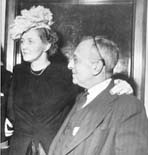
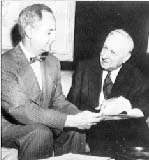





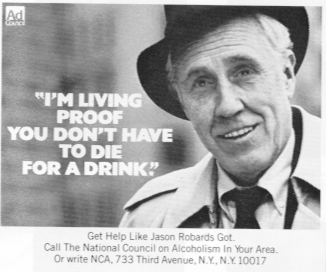
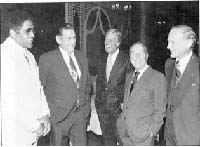
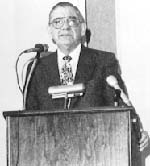


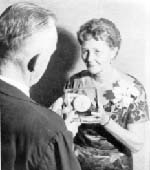


 Your first task is to settle all the major worries you have regarding the airline industry. No self-help skills will assist you in your goal unless you choose to
Your first task is to settle all the major worries you have regarding the airline industry. No self-help skills will assist you in your goal unless you choose to 
